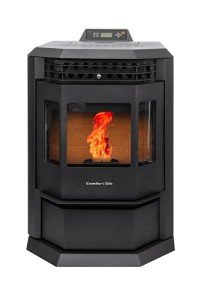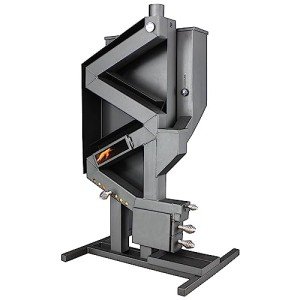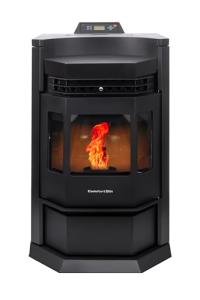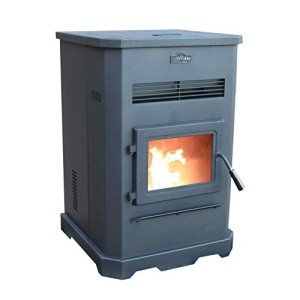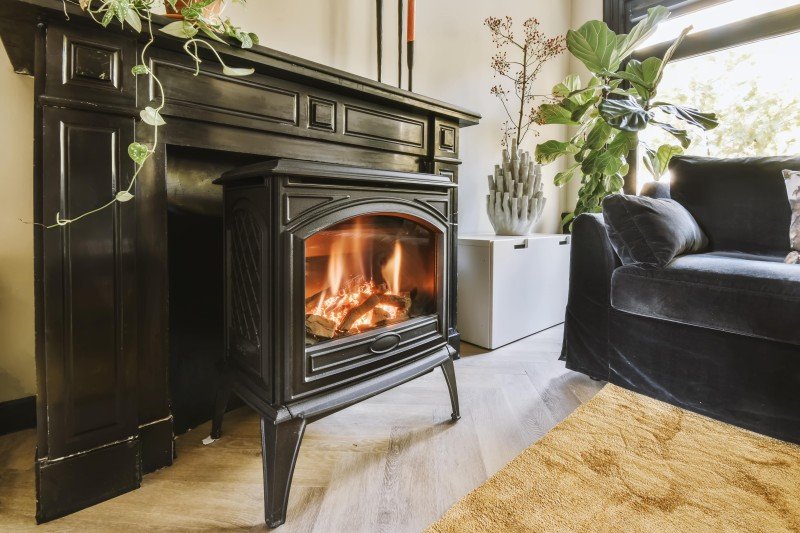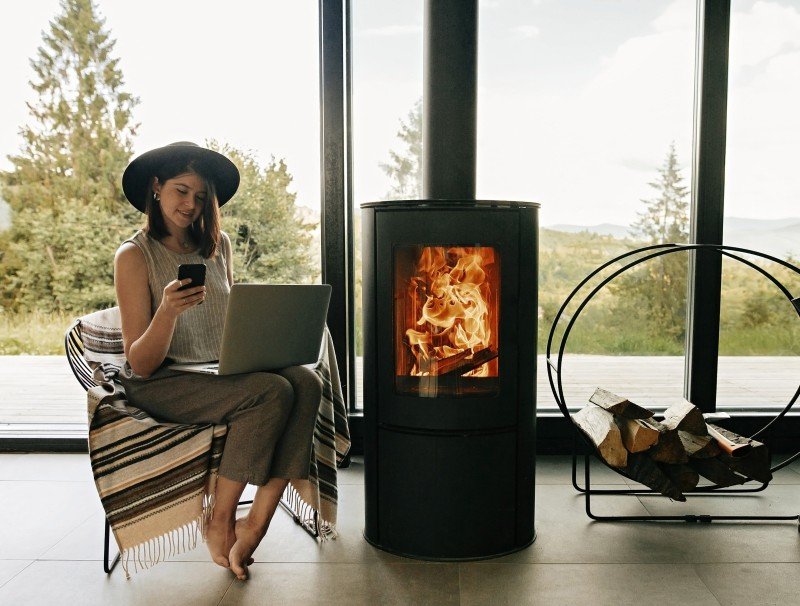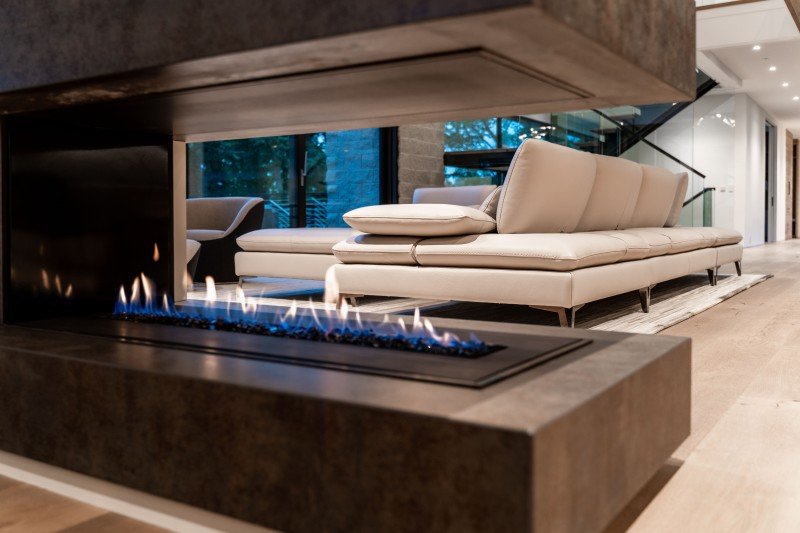Introduction
Welcome to the ultimate beginner's guide to pellet stoves. In this comprehensive guide, you will learn everything you need to know about pellet stoves, including how they work, the different types available, installation and maintenance tips, safety precautions, and much more. Whether you're considering investing in a pellet stove for your home or simply curious about this eco-friendly heating option, this guide will provide you with all the information you need to make an informed decision.
What are Pellet Stoves?
Pellet stoves are a type of stove that burn compressed wood or biomass pellets as fuel. These pellets are typically made from recycled materials such as sawdust, wood shavings, agricultural crop waste, or other organic materials. The pellets are poured into a hopper located at the top of the stove and automatically fed into the combustion chamber where they are ignited to produce heat.
How Do Pellet Stoves Work?
Pellet stoves operate through a system of combustion and convection to generate heat. Here's a breakdown of how they work:
- Fuel Loading: Pellets are loaded into a hopper attached to the stove.
- Automatic Feeding: An auger or screw mechanism automatically feeds the pellets into the combustion chamber.
- Ignition: A heating element or igniter ignites the pellets once they reach the combustion chamber.
- Combustion: The pellets burn, and the heat generated warms the air inside the stove.
- Heat Distribution: A convection fan blows the warmed air into the room, while smoke and exhaust gases are vented outside through a flue or vent pipe.
Types of Pellet Stoves
There are several types of pellet stoves available on the market, each offering unique features and benefits. The most common types include:
- Freestanding Pellet Stoves: These stoves stand alone and can be placed anywhere in a room.
- Insert Pellet Stoves: Designed to fit into an existing fireplace, these stoves offer a convenient way to convert a traditional fireplace into a more efficient heating source.
- Built-In Pellet Stoves: These stoves are built directly into the wall or structure of a home, offering a seamless and space-saving heating solution.
- Top-Fed Pellet Stoves: Pellets are loaded from the top of the stove, allowing for easier maintenance and cleaning.
- Bottom-Fed Pellet Stoves: Pellets are fed into the combustion chamber from the bottom, providing a more consistent burn and heat output.
Advantages of Using Pellet Stoves
There are several advantages to using pellet stoves as a heating alternative:
- Efficiency: Pellet stoves are highly efficient and can provide consistent heat output.
- Cost-Effective: Pellet fuel is often more affordable than other fuel sources such as oil or electricity.
- Environmentally Friendly: Pellet stoves burn clean and produce low emissions, making them a more sustainable heating option.
- Convenient: Pellet stoves are easy to operate and can be controlled with thermostats or timers for added convenience.
- Aesthetically Pleasing: Pellet stoves come in a variety of designs and styles to complement any home decor.
Disadvantages of Using Pellet Stoves
While pellet stoves offer many benefits, there are also some drawbacks to consider:
- Initial Cost: The upfront cost of purchasing and installing a pellet stove can be higher compared to traditional heating options.
- Maintenance: Pellet stoves require regular cleaning and maintenance to ensure optimal performance.
- Dependency on Electricity: Most pellet stoves require electricity to operate, so they may not be suitable for areas prone to power outages.
- Storage Space: Storing pellets can take up a significant amount of space, which may be a consideration for some homeowners.
- Noise: Some pellet stoves can be noisy during operation, especially when the auger is feeding pellets into the combustion chamber.
Choosing the Right Pellet Stove
When selecting a pellet stove for your home, there are several factors to consider:
- Size: Choose a stove size that matches the square footage of the area you want to heat.
- Heating Capacity: Look for a stove with the appropriate heat output (BTUs) for your space.
- Efficiency: Consider the stove's efficiency rating to ensure you get the most out of each pellet.
- Design: Select a stove design that complements your home's aesthetic and fits your decor.
- Features: Decide on additional features such as thermostats, programmable settings, and remote controls based on your preferences.
Installation Process of Pellet Stoves
Proper installation of a pellet stove is crucial for safety and optimal performance. Here are the general steps involved in installing a pellet stove:
- Selecting a Location: Choose a suitable location with proper clearances from combustible materials.
- Preparing the Space: Ensure the floor and surrounding area are heat-resistant and can support the weight of the stove.
- Venting: Install a vent pipe or chimney to safely exhaust smoke and gases outside.
- Connecting Electricity: Pellet stoves require a standard electrical outlet to power the auger and fan.
- Initial Startup: Follow the manufacturer's instructions to start and test the stove for proper operation.
Safety Precautions to Follow
To ensure safe operation of your pellet stove, follow these essential safety precautions:
- Clearances: Maintain proper clearances between the stove and nearby combustible materials.
- Ventilation: Ensure adequate ventilation to prevent the buildup of carbon monoxide and other harmful gases.
- Regular Maintenance: Clean and inspect your pellet stove regularly to prevent creosote buildup and malfunctions.
- Use Quality Pellets: Use high-quality pellets to avoid issues such as clogs and uneven burning.
- Carbon Monoxide Detector: Install a carbon monoxide detector near the stove as an added safety measure.
Proper Maintenance of Pellet Stoves
Regular maintenance is key to keeping your pellet stove running smoothly. Here are some maintenance tasks to perform:
- Cleaning: Clean the ash pan, burn pot, and glass door regularly to prevent buildup and ensure optimal performance.
- Inspecting Gaskets: Check the seals and gaskets for wear and tear, replacing them as needed to maintain a tight seal.
- Lubrication: Lubricate moving parts such as the auger motor and convection fan to prevent friction and ensure smooth operation.
- Chimney Cleaning: Have the chimney or vent pipe cleaned and inspected annually to remove creosote buildup and prevent blockages.
- Professional Maintenance: Schedule annual professional maintenance to check for potential issues and keep your stove in top condition.
Comparing Pellet Stoves to Other Heating Options
When deciding on a heating system for your home, it's essential to consider how pellet stoves compare to other options:
- Pellet Stoves vs. Wood Stoves: Pellet stoves are often more efficient and environmentally friendly than traditional wood stoves.
- Pellet Stoves vs. Gas Fireplaces: While gas fireplaces are convenient, pellet stoves offer more sustainable fuel options and higher efficiency.
- Pellet Stoves vs. Electric Heaters: Pellet stoves provide more consistent heat output and can be more cost-effective than electric heaters in the long run.
- Pellet Stoves vs. Oil Heating: Pellet stoves are cleaner burning and can be a more eco-friendly alternative to oil heating systems.
- Pellet Stoves vs. Propane Heaters: Pellet stoves are often more efficient and require less frequent refueling compared to propane heaters.
Tips for Efficiently Operating a Pellet Stove
To get the most out of your pellet stove, follow these tips for efficient operation:
- Adjust Settings: Set the thermostat to maintain a comfortable temperature without overheating the room.
- Use High-Quality Pellets: Opt for premium pellets with low ash content for cleaner burning and better efficiency.
- Regular Cleaning: Clean the stove and chimney components regularly to prevent blockages and ensure proper airflow.
- Zone Heating: Use the pellet stove to heat commonly used areas of the home, allowing you to lower the thermostat on your central heating system.
- Monitor Fuel Levels: Keep an eye on pellet levels in the hopper and refill as needed to avoid running out of fuel.
Troubleshooting Common Pellet Stove Issues
If you encounter any problems with your pellet stove, here are some common issues and troubleshooting tips:
- Auger Jamming: Remove any obstructions in the auger or hopper, and check for pellets that may be causing the jam.
- Poor Ignition: Ensure the igniter is working correctly and check for clogs in the burn pot that may be hindering ignition.
- Low Heat Output: Clean the heat exchanger and flue to improve heat transfer efficiency, and adjust the air intake for optimal combustion.
- Excessive Ash Buildup: Clean the burn pot and ash pan regularly, and adjust feed rates if necessary to reduce ash accumulation.
- Fan Issues: Check the fan motor and blades for debris or damage, and lubricate the motor as needed to improve airflow.
Environmental Impact of Pellet Stoves
Pellet stoves offer several environmental benefits compared to traditional heating methods:
- Renewable Energy: Pellets are made from sustainable, renewable sources such as sawdust and agricultural waste.
- Low Emissions: Pellet stoves produce minimal emissions compared to fossil fuels, helping reduce air pollution.
- Carbon Neutral: The carbon footprint of pellet stoves is considered neutral since the carbon released during burning is offset by the carbon absorbed by the source materials.
- Energy Efficiency: Pellet stoves are highly efficient, using a minimal amount of fuel to produce a significant amount of heat.
Frequently Asked Questions (FAQs)
- Are Pellet Stoves Energy Efficient? Yes, pellet stoves are known for their high energy efficiency, typically ranging from 70% to 90% depending on the model and design.
- Do Pellet Stoves Require a Chimney? While some pellet stoves can be vented through a wall, most models require a chimney or vent pipe to safely exhaust gases outside.
- Are Pellet Stoves Environmentally Friendly? Yes, pellet stoves are considered environmentally friendly since they burn clean and renewable fuel sources, producing minimal emissions.
- Can Pellet Stoves Heat an Entire House? Depending on the size and heating capacity of the pellet stove, it may be able to heat a significant portion of a home, especially when used in conjunction with other heating sources.
- How Often Do Pellet Stoves Need to be Cleaned? Pellet stoves should be cleaned regularly, with tasks such as ash removal, glass cleaning, and chimney maintenance typically performed on a weekly or monthly basis.
- Do Pellet Stoves Require Electricity to Operate? Yes, most pellet stoves require electricity to power the automatic feed system, igniter, and convection fan, so a backup power source may be necessary in case of outages.
Pellet stoves offer a versatile, efficient, and eco-friendly heating solution for homeowners looking to reduce their carbon footprint and heating costs. By understanding how pellet stoves work, the different types available, installation and maintenance requirements, and safety precautions to follow, you can confidently choose and operate a pellet stove in your home. Whether you're seeking a supplemental heating source or considering a switch to pellet stoves as your primary heating system, this comprehensive guide has equipped you with all the information you need to get started on your pellet stove journey. Start enjoying the warmth and comfort of a pellet stove while embracing a more sustainable lifestyle.

